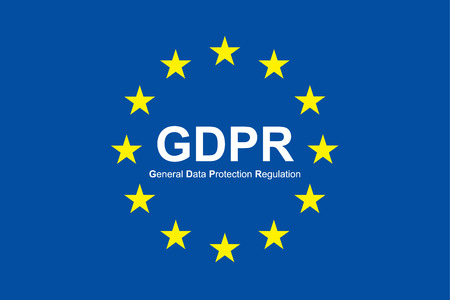1. Understanding the Basics: GDPR vs. CCPA
When it comes to developing privacy policies and notices, its important for U.S. businesses to understand the differences and similarities between the General Data Protection Regulation (GDPR) from Europe and the California Consumer Privacy Act (CCPA). Both laws aim to protect individuals’ personal data, but they do so in ways that reflect their unique cultural and legal environments.
Core Concepts of GDPR and CCPA
The GDPR is a European regulation that applies to all companies processing personal data of individuals located in the European Union (EU), regardless of where the business itself is based. The main focus is on giving people control over their personal data, including rights like access, correction, and deletion.
The CCPA, on the other hand, is California’s state law that gives residents more transparency about how their personal information is collected, used, and shared. It’s designed with similar goals as GDPR but often uses different language and has some unique requirements specific to California consumers.
Key Differences and Similarities
| Aspect | GDPR | CCPA |
|---|---|---|
| Who It Applies To | Any company worldwide handling EU residents’ data | For-profit businesses doing business in California, meeting certain thresholds |
| Main Focus | User control over data (rights to access, correct, erase) | Transparency and choice (right to know, right to opt out of selling info) |
| Definition of Personal Data/Information | Very broad – any information relating to an identified or identifiable person | Slightly narrower – information that identifies, relates to, describes, or could be linked with a particular consumer or household |
| User Rights | Access, rectification, erasure (“right to be forgotten”), restriction, portability | Right to know, right to delete, right to opt out of sale of personal info |
| Penalties for Non-Compliance | Up to €20 million or 4% of global revenue (whichever is higher) | $2,500–$7,500 per violation (civil penalties) |
Territorial Scope: What U.S. Businesses Need to Know
If your business is based in the U.S., you might think these rules don’t apply—but that’s not always the case! The GDPR applies if you offer goods or services to people in the EU or monitor their behavior online. The CCPA applies if your business collects personal information from California residents and meets certain size or revenue thresholds. This means many U.S.-based companies need to consider both sets of rules when writing privacy policies and notices.
2. Core Components of Effective Privacy Policies
Designing Clear, Accessible, and User-Focused Privacy Policies
When developing privacy policies and notices, especially under the requirements of GDPR and CCPA, it’s essential to focus on clarity, accessibility, and user experience. People in the U.S. expect straightforward information about how their personal data is collected, used, and protected. A well-designed privacy policy should avoid legal jargon and be easy for everyone to understand.
Key Elements Required by GDPR and CCPA
| Component | Description | Best Practice |
|---|---|---|
| Data Collected | What types of personal data you gather (e.g., name, email, location) | List each data type clearly with examples |
| Purpose of Collection | Why you collect this information (e.g., marketing, service improvement) | Explain reasons simply without vague language |
| User Rights | What users can do about their data (access, delete, opt-out) | Add direct links or instructions for exercising rights |
| Disclosure to Third Parties | If and when data is shared with others (partners, vendors) | Name categories or specific third parties where possible |
| How Data is Protected | Security measures in place to protect personal info | Avoid technical terms; use familiar examples (e.g., encryption like online banking) |
| Contact Information | How users can reach out with questions or concerns | Provide multiple options: email, phone number, mailing address |
The Importance of Plain Language and Accessibility
No Legalese—Just Straight Talk!
Your privacy notice should use everyday words. For example, instead of saying “data subject,” say “you” or “our users.” Avoid long sentences and break up big ideas into short paragraphs or bullet points.
Accessibility for All Audiences
- Font Size: Use legible font sizes and colors that are easy to read.
- Mobile-Friendly: Make sure your policy looks good on smartphones and tablets.
- Assistive Technologies: Design your policy so that screen readers can interpret it easily for those who are visually impaired.
- Language Options: Consider offering translations for non-English speakers if your audience is diverse.
User-Focused Structure Example:
- Main Points First: Start with a summary section answering the top questions: What info do we collect? Why? How can I control it?
- Dive Deeper: Follow up with details for those who want more information.
- Easily Found Links: Provide quick access to related resources like cookie policies or user settings.
An effective privacy policy not only keeps you compliant but also builds trust with your users by showing respect for their rights and providing them the information they need in a clear, accessible way.

3. Crafting Transparent Privacy Notices
When creating privacy notices that satisfy both GDPR and CCPA, U.S. businesses need to focus on being clear, upfront, and respectful of users’ expectations. Both laws require that individuals understand what data is collected, how it’s used, and what choices they have. Here’s practical guidance to get this right for your American audience:
Key Elements of a Transparent Privacy Notice
| Element | Description | U.S. Best Practice Example |
|---|---|---|
| Data Collected | List types of personal info you collect (e.g., email, location) | “We collect your name, email address, payment info, and device location.” |
| Purpose of Collection | Explain why you need this data | “We use your info to process orders and improve our services.” |
| Sharing Information | State if/when data is shared with third parties | “We may share your info with shipping partners to deliver your purchase.” |
| User Rights | Describe rights under GDPR & CCPA (access, delete, opt-out) | “You can ask for a copy of your data or request deletion at any time.” |
Methods for Notification
- Email Notifications: Send policy updates directly to users’ inboxes.
- Banners & Pop-ups: Use website banners or pop-ups for important changes or consent requests.
- Dedicated Webpage: Maintain an easy-to-find privacy policy page linked in the website footer.
Consent Mechanisms that Work in the U.S.
- Opt-In Checkboxes: For sensitive data, let users check a box before sharing.
- Clear Opt-Out Options: Offer a simple way to stop data collection—like “Do Not Sell My Info” buttons required by CCPA.
Just-in-Time Alerts
If you’re collecting new types of data (like location), trigger a short notice or alert right when it happens. For example: “This app would like to access your location. We use this to show nearby stores. Allow or Deny?” This helps meet expectations for transparency and keeps users in control.
4. Best Practices for Ongoing Compliance and Updates
Why Ongoing Compliance Matters
Staying compliant with GDPR and CCPA isn’t a one-time job. Privacy laws evolve, and so do business practices. Keeping your privacy policies and notices up to date builds trust with your users and helps you avoid costly fines.
Tips for Keeping Policies and Notices Current
- Schedule Regular Reviews: Set a reminder to review your privacy policies at least once every year, or whenever major changes happen in your business or the law.
- Track Legal Updates: Subscribe to newsletters from trusted legal sources or regulatory bodies. This way, you’ll hear about new requirements as soon as they come out.
- Document Changes: Keep a simple log of policy updates—what changed, when, and why. This helps if regulators or customers have questions.
- Get Team Input: Involve key team members (like IT, marketing, and legal) in the review process so no important details are missed.
Example: Policy Review Schedule
| Review Frequency | Who’s Responsible | What to Check |
|---|---|---|
| Semi-Annually | Compliance Officer | Legal updates, internal processes |
| As Needed (after changes) | Privacy Team | User data collection, sharing practices |
| Annually | Leadership & All Teams | User feedback, transparency language |
Handling Regulatory Changes Effectively
- Create an Action Plan: When new laws or amendments come out, outline clear steps—who does what, by when—to make sure your policies reflect those changes.
- Avoid Legal Jargon: Update notices using plain English so users can easily understand what’s happening with their data.
- Test Your Policy Links: Make sure all links in your privacy notices still work after every update.
Checklist: Responding to Regulatory Changes
- Monitor official sources for new rules (like the California Attorney General or EU Data Protection Board)
- Update your privacy policy promptly after any legal change
- Communicate updates to users via email or website banners when appropriate
- Train staff on any new procedures or responsibilities that come with the updates
Maintaining User Trust Through Proactive Communication
- Email Notifications: Send out friendly emails explaining important privacy changes. Let users know how these updates benefit them and protect their rights.
- Add a “What’s New” Section: Use a simple summary box at the top of your policy highlighting recent updates—no one wants to read the whole document every time!
- User Feedback Loop: Offer a quick way for users to ask questions or give input about your privacy practices.
- Cultural Sensitivity: For U.S.-based users, use familiar American terms (like “cookies” instead of “tracking technologies”) and examples that match local expectations.
User Communication Table Example
| Update Method | Description/Best Use Case |
|---|---|
| Email Blast | Bigger policy changes; ensures direct user notification |
| Website Banner/Pop-up | Quick alerts about updates; good for all visitors |
| “What’s New” Box | Easily highlights recent edits right in the policy |
By following these best practices, you can help ensure your privacy policies stay current, legally sound, and user-friendly—all while building lasting trust with your audience.
5. Building a Culture of Transparency
Creating clear privacy policies and notices is not just about checking legal boxes—its about earning trust with your users. Under GDPR and CCPA, American organizations are expected to go beyond the fine print and truly embrace transparency. Here’s how you can align your company’s day-to-day practices with the spirit of openness:
Training Your Team
Your employees play a crucial role in upholding privacy standards. Regular training helps everyone—from customer service reps to IT staff—understand what data can be collected, how it should be handled, and what to do if something goes wrong. Consider these training basics:
| Training Topic | Why It Matters | Best Practice |
|---|---|---|
| Understanding Privacy Laws (GDPR & CCPA) | Ensures everyone knows key rules | Annual workshops or e-learning modules |
| Data Handling Procedures | Keeps data safe and secure | Step-by-step guides for daily tasks |
| Incident Response | Prepares team for data breaches or complaints | Regular drills and clear escalation paths |
Fostering Responsible Data Handling
Transparency means being open about how you collect, use, and store personal information. Encourage your team to:
- Collect only what’s needed: Don’t ask for more data than necessary.
- Explain why you need it: Use plain language in your policies.
- Respect user choices: Make it easy for people to opt out or update their preferences.
- Review regularly: Audit your processes to keep them up to date with evolving regulations.
Demonstrating Accountability to American Consumers
A culture of transparency shows your customers that you value their privacy. Here are some simple ways to demonstrate accountability:
| Action | How It Builds Trust |
|---|---|
| Publish easy-to-read privacy notices | Makes policies understandable for all users |
| Create a dedicated privacy contact or helpdesk | Makes it simple for consumers to get answers or request changes |
| Share regular updates about privacy practices | Keeps users informed about new measures or changes in the law |
| Respond quickly to privacy requests or concerns | Shows you take consumer rights seriously and act on feedback |
The Bottom Line: Make Transparency a Core Value
The most successful organizations make transparency part of their DNA—not just something written in a policy. By investing in training, championing responsible data handling, and openly communicating with customers, you’ll not only comply with GDPR and CCPA but also build lasting loyalty among American consumers.


